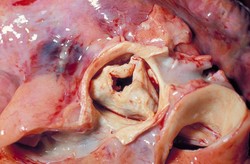Some clients with aortic stenosis will develop symptoms such as shortness of breath, fainting spells, and anginal chest discomfort. Their exercise tolerance will not be as good as it has been. Additionally, many of these patients experience a sensation of palpitations or fluttering in the chest. When these take place, prognosis is poor, and surgery is the recommendation [1. 2].
Without the operation, mortality rate at three years is 75 percent. The American Heart Association and American College of Cardiology provide the guidelines for these situations [1, 2].
Some who have this infirmity do not have signs or symptoms. Many of those clients remain that way for years despite the presence of severe disease, and the necessity of a surgical procedure in these cases is controversial in the literature. [1, 2].
Nevertheless, the approach to decision about surgery has changed over the decades because of improvements in surgical techniques and prostheses. This has led to lower rates of complication from the procedure and therefore a decline in mortality. Moreover, researchers anticipate that these results will continue to change for the better, and cardiac surgeons will perhaps proceed with the operation at earlier stages of the illness than they have in the past [1, 2].




 The Reality of Aspirinon 05/24/2021
The Reality of Aspirinon 05/24/2021
 An Old Microbeon 03/31/2021
An Old Microbeon 03/31/2021
 Coronavirus and Mental Illnesson 02/14/2021
Coronavirus and Mental Illnesson 02/14/2021
 Acute Ischemic Strokeon 12/25/2020
Acute Ischemic Strokeon 12/25/2020


Comments